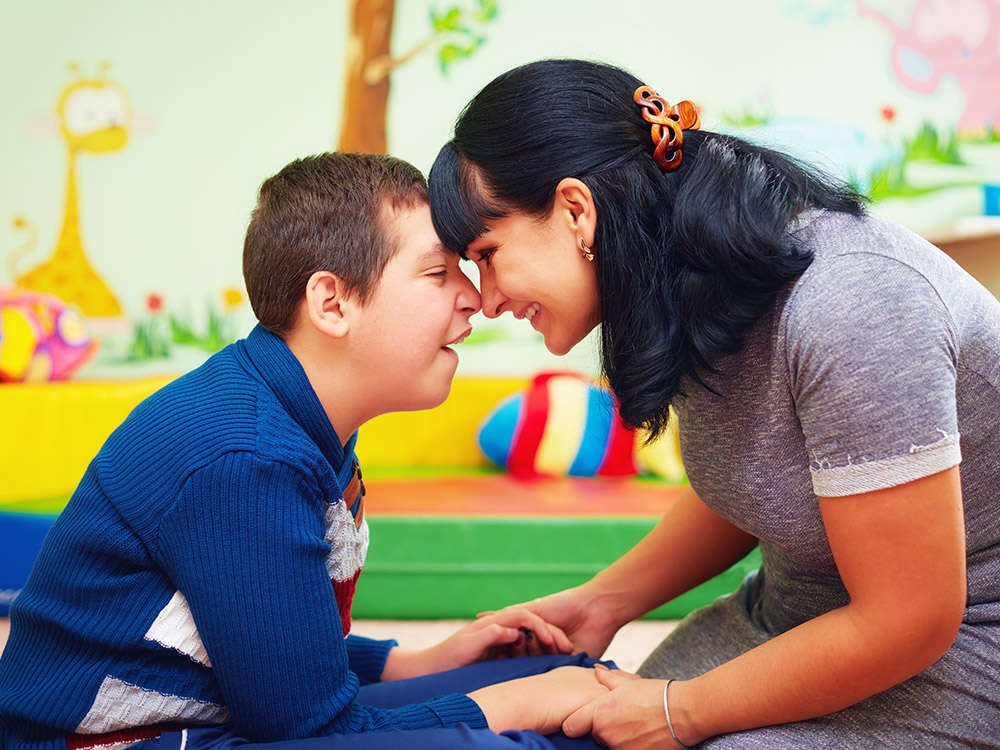The Duty of Education And Learning in Supporting Trainees with Autism: Ideal Practices
The Duty of Education And Learning in Supporting Trainees with Autism: Ideal Practices
Blog Article
Recognizing Autism: A Comprehensive Overview to Signs And Symptoms and indicators
Autism Range Problem (ASD) incorporates a vast array of qualities that can dramatically affect an individual's social interactions and everyday functioning. Identifying the signs and indications, such as difficulties with eye call, social interaction problems, and sensory sensitivities, is vital for early intervention. Comprehending these nuances not only help caretakers and teachers in offering suitable assistance however additionally fosters a more inclusive environment for individuals with ASD. As we explore the intricacies of autism, it ends up being crucial to think about just how these indicators show up differently throughout the range and what effects they hold for reliable intervention techniques.
Review of Autism Spectrum Problem
Defining Autism Spectrum Disorder (ASD) involves acknowledging it as a complicated neurodevelopmental condition defined by a series of challenges in social communication, communication, and behavior patterns. The term "spectrum" shows the large variability in symptoms and their seriousness, which can differ considerably from one person to another. ASD commonly manifests in early childhood, although some individuals might not receive a medical diagnosis until later in life.
Aspects influencing the growth of ASD include ecological factors and hereditary predispositions, although the exact reasons remain under examination. Diagnosis commonly depends on behavioral evaluations, as there are no clear-cut medical tests for ASD. Early intervention is crucial and can dramatically enhance outcomes, concentrating on improving interaction skills, social communications, and adaptive actions.
Individuals with ASD may likewise display unique staminas, such as extraordinary interest to information or details areas of competence. Recognizing the complex nature of ASD is crucial for fostering a comprehensive environment that fits neurodiversity. Proceeded research study is crucial for establishing efficient interventions and support systems, making it possible for individuals with ASD to prosper and satisfy their possible within society.
Typical Signs of Autism
Identifying the common signs of Autism Spectrum Condition (ASD) is crucial for very early recognition and treatment. These indications can differ widely in seriousness and presentation, but certain characteristics are frequently observed in people with ASD.
One of the most widespread signs is a significant problem in developing and preserving eye get in touch with. Individuals might also exhibit limited rate of interest in social interactions and show a preference for singular play.
Sensory sensitivities are likewise common; people might underreact or panic to sensory stimuli, such as lights, noises, or appearances. autism. Language development can be irregular, with some children showing delayed speech or making use of language in uncommon ways, including echolalia-- duplicating sentences or phrases listened to elsewhere
It is essential to keep in mind that not every individual with ASD will present all these signs, and the level of these actions can vary significantly. Early acknowledgment permits for prompt support and sources, improving the lifestyle for those on the spectrum.
Social Interaction Challenges
Social interaction difficulties are a trademark of Autism Spectrum Condition (ASD), influencing an individual's ability to involve effectively with others. These difficulties can show up in various methods, consisting of obstacles in launching and keeping discussions, recognizing social cues, and reacting suitably in social interactions.
Individuals with ASD may deal with nonverbal communication, such as eye get in touch with, faces, and body language. This can cause misconceptions, as their communicative intent might not be correctly analyzed by others. Furthermore, they might locate it challenging to understand the subtleties of tone and context, which are necessary for reliable interaction.
In team settings, individuals with ASD might really feel overloaded and may not know just how to join in discussions (autism). They may also show atypical conversational patterns, such as monologuing about certain interests without identifying social reciprocity
Moreover, these difficulties can lead to social isolation or problems in creating relationships, as peers may misinterpret their behavior or interaction design. Recognizing these social communication difficulties is essential for promoting encouraging atmospheres that promote social skills growth and enhance the quality of interactions for individuals on the autism spectrum.
Sensory Sensitivities and Actions
Lots of people with Autism Spectrum Disorder (ASD) experience increased sensory level of more tips here sensitivities that can dramatically affect their daily lives. An individual with ASD might locate day-to-day noises, such as a vacuum cleanser or crowded settings, extremely traumatic, leading to anxiousness or meltdowns.
Sensory handling differences in individuals with ASD can additionally impact their capability to take part in routine tasks and social communications. For instance, a child that is sensitive to touch might stand up to physical love or stay clear of certain apparel textiles. Conversely, a choice for specific textures or tastes can restrict nutritional alternatives and create obstacles during mealtimes.
Comprehending these sensory sensitivities is essential for identifying the distinct experiences of individuals with ASD. Awareness of their sensory accounts can promote far better communication and support strategies, producing an environment that accommodates their needs and boosts their lifestyle. Inevitably, recognizing sensory sensitivities is a vital part of understanding the broader spectrum of autism.

Supporting People With Autism
Reliable support for people with Autism Spectrum Condition (ASD) is essential for enhancing their total wellness and cultivating self-reliance. Support approaches must be customized to satisfy the unique needs of each individual, considering their obstacles and staminas.

Social abilities training can also play a critical duty. autism. Engaging people in team activities or role-playing scenarios can enhance their ability to navigate social communications. In addition, it is vital to inform member of the family, caregivers, and peers concerning ASD to cultivate a helpful and inclusive community
Conclusion
By cultivating enhanced interaction and social skills, individuals with autism can navigate their atmospheres extra effectively. read this article Ultimately, enhanced recognition and assistance can substantially boost the high quality of life for those influenced by ASD.
Autism Range Problem (ASD) incorporates a vast array of qualities that can considerably influence an individual's social read this article interactions and day-to-day functioning.People with ASD might battle with nonverbal communication, such as eye contact, face expressions, and body language.Several people with Autism Range Condition (ASD) experience increased sensory level of sensitivities that can dramatically affect their daily lives.Sensory handling distinctions in people with ASD can likewise impact their ability to engage in social interactions and regular tasks.Comprehending these sensory sensitivities is essential for acknowledging the unique experiences of people with ASD.
Report this page